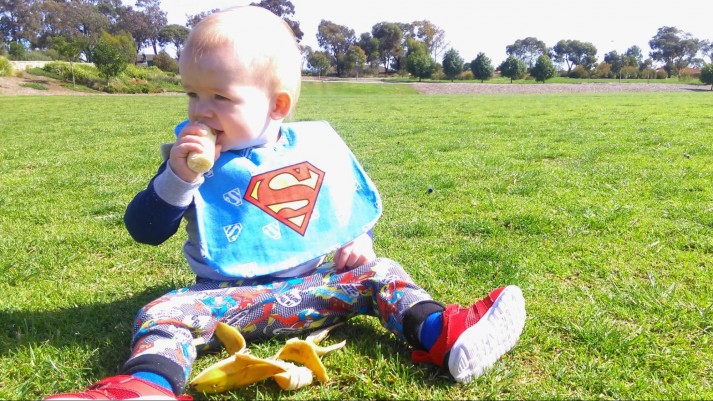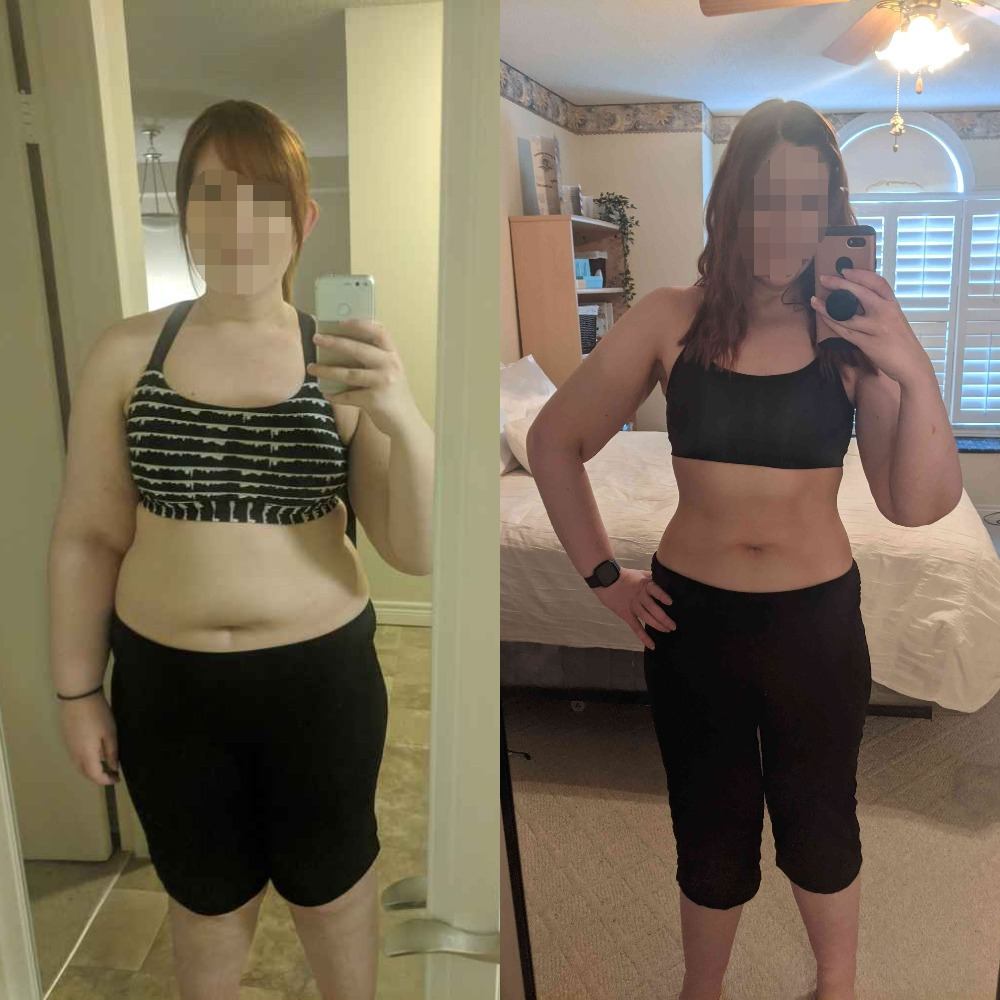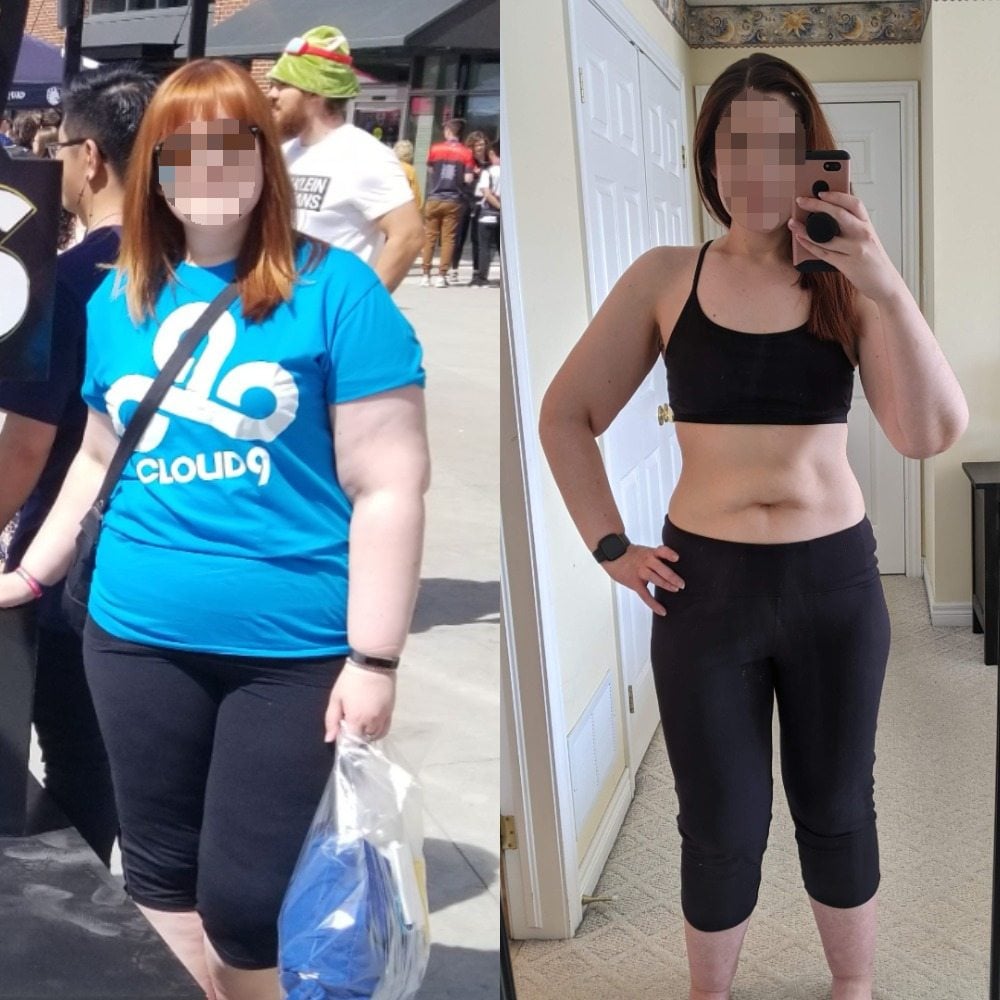Originally posted at: http://www.nerdfitness.com/

If one thing’s true about parenting it’s this: it’s bloody tiring.
Any parent will tell you that as soon as Player 2 or 3 enters the game, the sleep level difficulty instantly shifts from ‘tutorial’ to ‘expert’.
But have no fear, we’ll set you up with some tips to help you regain a little energy.
Many folks in our Online Coaching Program are parents (as well as the coaches themselves!) so we have all sorts of advice on how to stay energized with kids around.
Here’s what we’ll cover today:
- Engage in multiplayer mode (Ask for help).
- How to do less (Picking priorities).
- Why moving more will make us more energized.
- The importance of eating well, regularly.
- Rethinking our sleep schedule.
- How to improve our sleep quality.
Let’s jump right in.
Engage in Multiplayer Mode

CHILD used TIRE. It’s SUPER EFFECTIVE!
If you and your partner really feel burnt out (or you’re a single parent and you’re struggling), I have one big message for you:
Ask for help.
Let go of the feeling that asking for help is some epic inconvenience or that you’ll no longer be this self-sufficient superhero. Even Batman needs Robin. Asking partners, family, or friends to take your little one out for a walk or just keep an eye on them while you have a moment’s rest can be the difference between getting through a week with energy and struggling to the end of a week feeling exhausted.
If you’re lucky enough to have a partner or someone who can help out, try taking turns settling or feeding overnight, and work with what best fits your sleep type.
Couples, talk to each other! So many parents I’ve worked with have been struggling for so long because they simply haven’t spoken with their partners about their needs.
Feel like you’re a night person and you’re always exhausted when you feed the baby in the morning? A short conversation could really make a huge impact: “I think I’d be better off putting the baby to bed and feeding at night if you can do the morning feed and let me sleep until 7. What do you think?”
Figure out what you both want, try a few things out, and come to an agreement on what works best for both of you.
My wife and I found a way to take advantage of my ‘night owl’ tendencies by expressing the milk beforehand (and storing it safely). I stayed up late like normal, allowing my wife to go to bed early, and I covered the 2 am feed.
Even if you don’t have kids, this is a great strategy for couples or roommates to divide responsibilities.
What responsibilities and chores can you divide to work to your advantage, allowing you to rest when you need it?
Do less, be better
At the end of the day, you can’t do it all. Most days I go about doing everything I can, pretending I’m a Superman…

…but in the end, we’re all just Clark Kent. If we’re feeling like we’ve been exposed to Kryptonite, we won’t be able to effectively look after our little ones or get the things done that need doing.
Sometimes our expectations of ourselves are simply too high; we make a list of things to do that is unrealistic. As parents especially, but also for anyone who feels like they “just never have time”, making hard choices and prioritizing what’s important can help take the pressure off while improving your overall output.
We all like to think that we can play with the kids, get them dressed, go to work, cook an amazing dinner, clean the house, get the ironing done, put the kids to sleep, go to the gym, and play ‘just 15 minutes’ of our favorite video game in between everything else going on in our lives. But as parents and busy people of all varieties, we need to accept that our lives are different now, and we need to let go of certain things that might not be as important anymore.
Try picking a few things out of your week to stop doing so you can focus on what’s really important to you. It may feel weird at first, but you’ll be able to focus on the big wins and accept that you’re not going to be able to fit EVERYTHING from your old schedule into your new life.
Move More

“But I’m already so tired, and you expect me to move more?!”
I know it’s a really tough ask. But it’s been shown that physical activity can actually increase your energy levels, make you feel better, and even increase the quality of the little sleep that you do get.
As parents, we’re usually short on time, so the easiest way to get moving more is to sneak light exercise into everyday activities. This could be a walk with your child to somewhere nearby that you would usually drive to, rolling around on the floor with them, or some roughhousing.
For non-parents and parents alike, try to complete some smaller “move more” quests like taking the stairs instead of the elevator, walking the long way, or dancing in your house when you’re just hanging out or cooking a meal.
Movement really matters. Think of this like a small investment in your day – you pay in a little movement upfront, but you’ll start to notice that these tweaks will pay dividends in your energy and mood. It’s amazing how these small movements add up to not only help you get through the day, but in turn help you sleep better and set you up for success the next day. It’s a cycle of awesome!
Steve shared some great tips on “How to Stay Active When You Have a Family” if you’re looking for a more complete guide.
Eat well regularly

“Wait, so a fitness site is telling me to eat better and move more? Interesting.”
Yes, I know you’ve heard it all before, but this isn’t just cliche advice. It’s crucially important, research-backed advice. Eating healthy and moving more isn’t just a physical fitness thing, it’s about keeping your brain working at full capacity and your energy levels up.
Once you become a parent, there will be changes in your lifestyle, daily routine, social values, and spending power. This makes the temptation of unhealthy snacks and cheap fast-food that much more appealing: it’s cheap, it’s easy, and it tastes great it’s designed to manipulate your taste buds and hit the perfect bliss point.
But as we all know by now, this is a recipe for a downward spiral of energy, mood, and health. Eating the right amount of calories and the right types of food is the foundation for feeling great every day.

Regular healthy snacks can be important as a parent, especially if you’re throwing off your body’s clock by being awake at all hours of the night. A small hit of fat or protein to the system will really help you work up the motivation to take the baby for a walk, wash those bottles, or spend some time on the floor with your little one. Don’t be afraid to keep a jar of almond butter nearby!
For more on snacking, check out Steve’s full article here.
Rethink your silly sleep schedule

The sooner you actually think about your sleep and establish a bedtime routine, the better. Your baby will be more relaxed if they know what’s coming next. It’s been shown that with a routine, your kids will be more likely to go to bed easily, fall asleep quicker, and even improve their wakeful state afterward as well!
But establishing a sleep routine is great for parents (and other adults) too, as it gives you time to wind down, and makes your day a little more predictable. Studies show understanding sleep routines may help in making choices that will lead to better quality sleep. Once you start to fall into a good routine, you’ll be able to know when you can get things done around your little Rebel’s slumber, and maybe even get some extra shuteye yourself.
So, if you don’t have a sleep routine, it’s time to implement one starting now. I suggest working it around when your child naturally sleeps best. Don’t swim upstream if you don’t have to.
A good way of going about this is to track your child’s sleep pattern for at least a week so you can really recognize any patterns. I’ve even compiled the official ‘Nerd Fitness Child Sleep Diary’ (or the Tired Parent Syndrome (TPS) Report) for you to print out and keep records in. Just open the document and go to file –> “Make a copy.”
Start establishing a routine by giving your child a bath, bedtime story, feed, and a lullaby…maybe using an ocarina!

Stick to the same time and order each night and your child will be more settled as time goes on.
Once you’ve figured out and established your routine, try to rest around the time your child is resting. I know not everybody has this luxury, but if possible, try to lay down, relax, meditate or even have a power nap during their day sleeps.
Level Up Your Sleep Game

When you become a parent, chances are you’ll be sleeping like a baby for a few years, even if you don’t get a lot of shut-eye. (Whoever coined that phrase obviously never had kids.) You’ll likely be waking up really grumpy every few hours and taking a long time to settle back down.
Let’s be realistic here: you’re more than likely not going to get as much sleep as you need, and you’re going to feel tired more often than not. Recognizing this, knowing your limitations, and knowing how to optimize your energy levels is the key to staying on top of your game.
Here are a few bonus tips to ensure you’re getting the best rest you can:
- Follow good sleep hygiene rules – limit media use in the bedroom and have time to wind down. If you don’t get much sleep time anymore, you should make sure the little shuteye you get is good quality.
- Limit your consumption of caffeine and alcohol for the hours leading up to bedtime – they can lead to poor sleep. If you do drink caffeine (most parents need to), use it wisely. See Taylor’s article for ways to go about this.
- Do some stress-busting things like yoga and meditation as often as you can. As mentioned, your child will pick up on and react to your mood, so being calm is always a good thing.
- If you feel the lack of sleep is really taking its toll on yourself or your child, seek professional advice as soon as you can. (My wife and I saw a specialized child sleep psychologist with our second child as he was constantly waking throughout the night, which made a world of difference.)
Your priorities change once you have children. You want what’s best for them and to be the best parent you can be. This means you must be rested, calm and healthy. An investment in you is an investment in them. Looking after yourself is paramount in caring for your child; they deserve nothing less.
So get started. Tonight, have a roll around on the floor with your child. The ironing can wait and the Reddit frontpage will still be full of reposts later on. Start figuring out your routine with our official Tired Parent Syndrome Report (yeah, if you can get those TPS reports done as soon as possible, that would be great). Talk to your partner about your schedules, or set up a time for a loved one to come lend a hand this week so you can get in a power nap or exercise.
To parent best, rest.

If you want some more help, Nerd Fitness is here for you.
We have three options on how to continue with us. Pick the option that best aligns with your goals:
Option #1) If you want a professional coach in your pocket, who can do video form checks, provide feedback, and adjust your workouts based on the equipment you have available, check out our 1-on-1 Online Coaching Program!
As I said earlier, many of our clients are parents, and they find a customized plan for their hectic lives to be a total gamechanger.
Option #2) If you want a daily prompt for getting in shape, check out NF Journey. Our fun habit-building app helps you exercise more frequently, eat healthier, and level up your life (literally).
Try your free trial right here:
Option #3) Become part of the Rebellion! We need good people like you in our community, the Nerd Fitness Rebellion.
Sign up in the box below to enlist and get our Rebel Starter Kit, which includes all of our “work out from home” guides.
- The 15 mistakes you don’t want to make.
- Full guide to the most effective diet and why it works.
- Complete and track your first workout today, no gym required.
Now, it’s your turn.
I love hearing from other Rebel parents, I’m always willing to try new ideas:
- How do you rest?
- Is your child a Zubat or a Snorlax?
- How do you fit exercise into your busy day?
-Dan
###
The post How to Fight the Tired Parent Syndrome first appeared on Nerd Fitness.



 Yerba mate (YERB-ah mah-TAY). Ever heard of it? It is an herb with a storied history as an alternative to traditional teas for the inhabitants of its native South America. I’ve received numerous emails recently asking about its properties and its role in the
Yerba mate (YERB-ah mah-TAY). Ever heard of it? It is an herb with a storied history as an alternative to traditional teas for the inhabitants of its native South America. I’ve received numerous emails recently asking about its properties and its role in the 





 Research of the Week
Research of the Week
 Feeling tired all the time? You’re not alone. Turns out
Feeling tired all the time? You’re not alone. Turns out 
 Some of my fondest childhood memories revolve around my neighbor’s trampoline. It was an unsafe, wide open, enormous monstrosity of a trampoline. There was no net (this was the 60s after all), the springs were exposed and really good at snagging errant body parts, and it was conveniently located right next to a 5 foot wall that we’d jump from. I mean, how could you not? It was right there.
Some of my fondest childhood memories revolve around my neighbor’s trampoline. It was an unsafe, wide open, enormous monstrosity of a trampoline. There was no net (this was the 60s after all), the springs were exposed and really good at snagging errant body parts, and it was conveniently located right next to a 5 foot wall that we’d jump from. I mean, how could you not? It was right there.














 Now that the world is opening back up (well… in some places), we’re eating out more, going to more parties, and returning to a “new” new normal that sometimes leaves us (or our partners) struggling to find balance. In this week’s Ask a Health Coach, Erin is here to answer your questions about all this, plus much more. Got something to ask? Post your question in the comments or in our
Now that the world is opening back up (well… in some places), we’re eating out more, going to more parties, and returning to a “new” new normal that sometimes leaves us (or our partners) struggling to find balance. In this week’s Ask a Health Coach, Erin is here to answer your questions about all this, plus much more. Got something to ask? Post your question in the comments or in our  For now classes are 6pm and 640pm at 2840 Wildwood st in the Boise Cloggers studio.
Book your class NOW!
click this ==>
For now classes are 6pm and 640pm at 2840 Wildwood st in the Boise Cloggers studio.
Book your class NOW!
click this ==>








